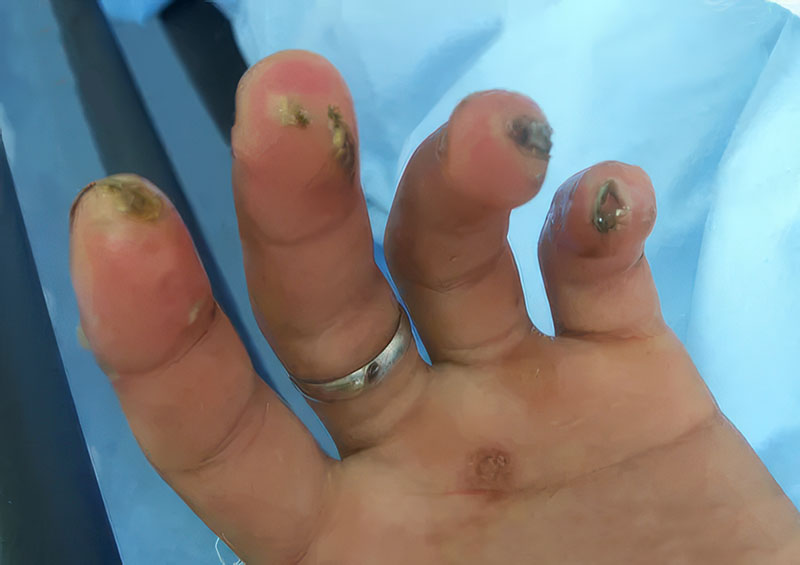From Shock to Tragedy
Understanding — and preventing — the dangers of electrocution
Electrical injury isn’t just a jobsite hazard. It’s a risk that can occur in our homes, workplaces, and public spaces.
Este es nuestro intento de convertir las historias en audio español usando Inteligencia Artificial. Aún así le recomendamos que reconfirme ciertas palabras clave y temas. ArborTIMES no garantiza ni se responsabiliza de la conversión del inglés al español de los relatos.

The threat of electrocution is a frightening prospect on any jobsite. Trimming trees near power lines or conducting emergency work during a storm, especially at night, can expose workers to injury, permanent damage, or even death.
Defined as exposure to electric shock, electrocution can have a profound impact on the human body and can cause immediate and long-lasting consequences. These include cardiac arrest, neurological impairment, and death.
Electrocution is a largely preventable tragedy that would benefit from increased awareness, comprehensive safety protocols, and the prioritization of training and education.
Here’s how to stay safe in the field and protect yourself from the dangers of electrocution.
Understanding electrical injuries
Electricity is a form of energy where particles, usually electrons, move from one atom to another within a conductive material. When a voltage is applied across a conductor, an electric field is created. This causes electrons to move in a specific direction, which creates an electric current.
While electricity powers our modern lives with myriad conveniences, it also has the power to kill within minutes. According to the Centers for Disease Control and Prevention, there are four main types of electrical injuries.
Electrocution A term that combines “electric” with “execution,” electrocution refers to death caused by electric shock. This can occur when an electric current completely overwhelms a body and leaves a path of destruction that can affect multiple organs and bodily systems.
Electric shock This refers to the physiological reaction that can occur when a person encounters an electric current. While it may not result in death, there are a few different kinds of electric shock:

- Low-voltage shock Typically occurring when a person touches an electrical source such as household appliances, power outlets, or battery, it can create a range of unpleasant sensations, such as muscle contractions or vibrations and minor burns.
- High-voltage shock Deep tissue injuries, damage to internal organs, cardiac arrest, and even death can occur when a person encounters power lines, industrial equipment, or high-voltage machinery.
- Direct shock Touching a live wire or exposed electrical components can create a direct pathway for electrical currents to flow into the body.
- Indirect shock This can occur when a person touches a conductive object, such as metal, and can be just as dangerous as a direct shock.
- Arc flash This occurs when an electrical current jumps across a gap between two conductive materials. It is usually associated with high-voltage electrical systems.
Electric burns Ranging from minor to severe, an electric burn occurs when electrical energy is converted into heat and damages tissues as it passes through the body. There are three types of electric burns:
- True burns These can occur when an electrical current generates heat within the body to the point that it causes thermal damage to tissues.
- Flash burns Superficial burns to the skin and surrounding tissues can occur when a current produces an intense flash of heat.
- Arc burns This can occur when an electrical current jumps from one conductive material to another, leaving localized burns at the contact points.
Falls caused by contact The experience of electrocution, shock, or burn may cause a person to lose control and fall, causing injury or death.
Path of destruction
Contact with an electric current can create a point of entry that opens a pathway into the body through which the current flows.
From there, the current follows the path of least resistance, which can depend on tissue composition, thickness, moisture level, and conductivity. Thicker and drier layers offer more resistance.
Bone offers significant resistance when compared to soft tissue, and fat tissue has a relatively higher resistance than muscle or nerve tissue. The areas of the body with the lowest resistance include moist skin, muscle tissue, and blood. Because blood consists of water and electrolytes, it is significantly more conductive.
An electric current passing through the body’s organs can disrupt normal functions and cause serious injuries. Electric shock can especially affect the heart, which relies on electrical impulses to regulate its rhythm.
High-voltage shocks can particularly affect the heart in a variety of ways. Ventricular fibrillation can cause the heart’s ventricles to quiver ineffectively instead of pumping blood.

This can lead to cardiac arrest, which depletes the body of oxygenated blood and can cause irreversible brain damage. Bradycardia or tachycardia is when the heart beats too slow or too fast, which can cause dizziness, fainting, or chest pain.
Electric shock can affect the entire nervous system, including the brain and spinal cord. It can disrupt nerve impulses and result in severe muscle contractions, numbness, tingling, or loss of consciousness often visually associated with electric shock.
An electric current can also affect respiratory function leading to respiratory muscle paralysis or damage to the respiratory centers in the brainstem. This can cause shortness of breath, difficulty breathing, respiratory arrest, or complete respiratory failure.

An electric current will weave through the body until it finds an exit point that allows it to discharge and dissipate electrical energy. This can be the ground itself or something connected to the ground, such as a metal rod or surface. In some cases, multiple exit points may be involved, depending on how the charge is distributed throughout the body.
The severity of one’s injury can depend on the voltage involved, duration of exposure, and the current’s pathway through the body.
Emergency procedures
Proper training and education are essential to ensure workers know how to respond to a jobsite electrical injury. Consider the following safety guidelines:
Safety first Do not touch the injured person directly if they are still connected to the electrical source, as you may also be inadvertently shocked. Safely turn off the power source and use dry, non-conductive objects, such as a wooden stick, to separate the person from the electrical source, if needed.
Assess their condition Check to see if they are responsive and breathing and determine how serious the injury is. Begin cardiopulmonary resuscitation (CPR) if necessary and ask someone to immediately call for emergency medical assistance.
Check for injuries Look for burns at points of contact or elsewhere and check for signs of cardiac arrest or neurological damage. There may be no visible mark on the skin.
Administer first aid Apply cool (not cold) water to affected areas and cover with a sterile, non-adhesive dressing. Continue CPR if needed until medical help arrives.
Seek medical attention Get help immediately, even if the person’s injuries appear minor, as it can be difficult to determine internal damage. Stay with the person and continue to monitor until help arrives.

Avoiding tragedy
It is the employer’s responsibility to comply with Occupational Safety and Health Administration (OSHA) rules to keep workers safe. Here are a few guidelines to follow to ensure jobsite safety.
Preparation is key
- Train workers about potential hazards in a language they understand.
- Before any work begins, survey the area for hazards. Be sure to have an emergency plan.
- Electricity can travel through the ground. Be sure workers wear properly insulated footwear and other required PPE.
- Consider asking the utility company to de-energize nearby power lines.
Follow safe work practices
- Maintain a distance of at least 10 feet from overhead lines.
- Do not rely on protective clothing alone to protect against electrical hazards
- Ensure workers do not have direct contact with an energized conductor, such as a power line
- Ensure there is no indirect contact with an energized conductor, such as a tree limb or tool touching a power line.
- Ensure workers do not stand near grounding elements. Remember, power can travel through the ground.
Provide the right gear
- Workers must be provided with proper gloves and shoes.
- When electrical hazards are present, employers must provide rope that is free of moisture and contaminants and that provides appropriate insulation.
- Always provide fall protection for climbers.
Be alert
- Assume all lines are energized.
- Anticipate when limbs might fall onto power sources. It only takes a moment for a fatality to occur.
- Employers who are hired to clear trees from power lines must follow applicable OSHA requirements. See, for example, 29 CFR 1910.268, 29 CFR 1910.269, and 29 CFR 1910 Subpart S.
For more information, visit osha.gov.


